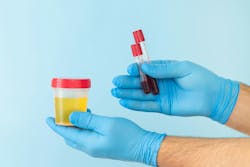Routine lab tests are not a reliable way to diagnose long COVID
A National Institutes of Health (NIH)-supported study has found that routine lab tests may not be useful in making a long COVID diagnosis for people who have symptoms of the condition.
The study, part of NIH’s Researching COVID to Enhance Recovery (NIH RECOVER) Initiative and published in the Annals of Internal Medicine, highlights how challenging it can be to identify and diagnose a novel illness such as long COVID.
The researchers conducted the study to determine whether a SARS-CoV-2 infection led to changes in biomarkers, such as platelet counts or protein in the urine, in individuals with a prior SARS-CoV-2 infection, compared to those without prior infection.
More than 10,000 adults — part of the RECOVER Adult Cohort — were recruited at 83 enrolling sites across the U.S. between October 2021 and October 2023. The cohort is demographically diverse, and participants came from a range of geographic locations. Among the 8,746 who had a prior SARS-CoV-2 infection, many had different variants, while 1,348 had never been infected.
The RECOVER Adult Cohort includes both individuals with and without prior SARS-CoV-2 infection and individuals with and without long COVID. Nearly 19% of the study population were identified as having long COVID.
Study participants completed a baseline set of surveys, a physical examination, and 25 standard laboratory blood and urine tests. Participants were then followed throughout the two-year study period, taking surveys every three months and lab tests at six-, 12-, 24-, 36-, and 48-month intervals. The lab tests included a complete blood count panel, metabolic panel, hemoglobin A1c (HbA1c), urinalysis, and urine albumin to creatinine ratio (uACR), among others.
According to the researchers, the lab tests detected markedly few differences in biomarkers between those with prior infection and those without. However, the team did find that prior infection was associated with modest increases in HbA1c, a measure of average blood sugar levels over two to three months, though those increases disappeared after researchers excluded people with pre-existing diabetes.
The researchers also noted slightly elevated increases in uACR, a measure of low kidney function, in participants with previous infection, but those were only seen in a minority of people in that group and may have resulted from severity of the initial infection.
In a secondary analysis, the researchers looked solely at the individuals in the infected group to determine the differences between those who developed long COVID versus those who did not. They used a previously described long COVID index, which identified 12 symptoms that best identified people with long COVID. Among participants with prior infection, the study found no meaningful differences in lab test results between the two groups.

